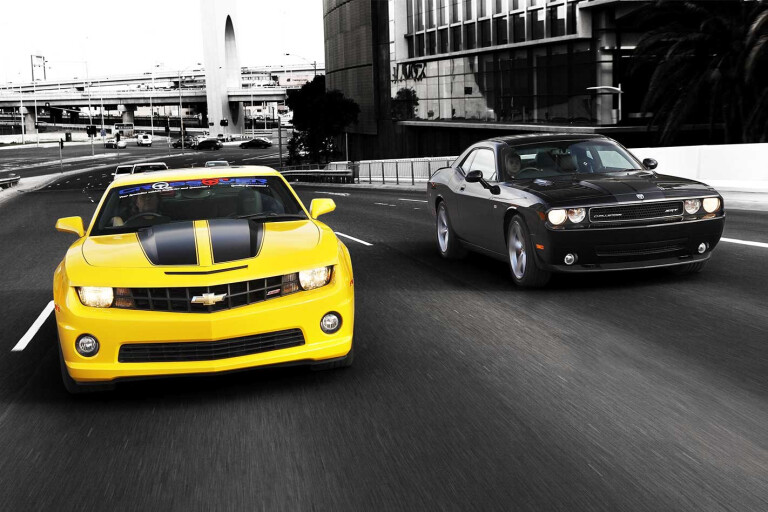
Dunno about you, but the whole retro thing has not, for the most part, applied to the sorts of cars that float a chap’s boat. Yeah, the born again Mini Cooper S is a proper performance car, but somehow the fashion statement gets in the way of the mission statement.
This feature was originally published in MOTOR’s January 2011 issue
The Fiat 500 is cute and that’s about it, and the less said about the latter-day Volkswagen Beetle, the better. Even the Audi TT kind of feels like a victim of its own style sense and, for less money, its stablemate S3 seems like the grown-up alternative.
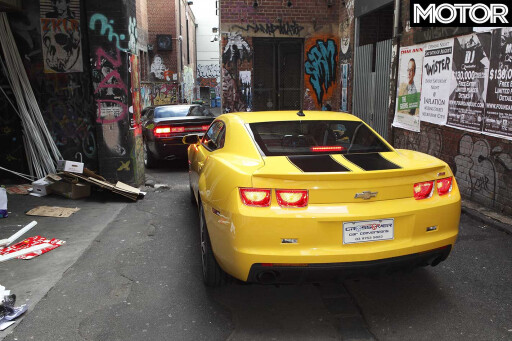 Which is not to say all retro cars have missed the boat – just that the SS Tough Guy hasn't really sailed for Oz. Stuff like the Dodge Prowler never made it here, and the Ford GT is only available as a private import with a price-tag most wallets can’t stretch over.
Which is not to say all retro cars have missed the boat – just that the SS Tough Guy hasn't really sailed for Oz. Stuff like the Dodge Prowler never made it here, and the Ford GT is only available as a private import with a price-tag most wallets can’t stretch over.
Mind you, the latest retro headliners in the Chevrolet Camaro and Dodge Challenger could easily fall into the same trap, especially since they need to be locally converted to right-hook to be road-legal here.
But the lower purchase price in the first place has meant that a handful of local operations are, in fact, importing examples of each, so you may soon see the odd one on Aussie highways. Figure on somewhere between $140,000 and $150,000 for either of the cars on these pages, depending on spec.
And do I also need to point out that a born-again Camaro and Challenger suddenly press all those chap’s car buttons the retro establishment hasn’t hit? Didn’t think so.
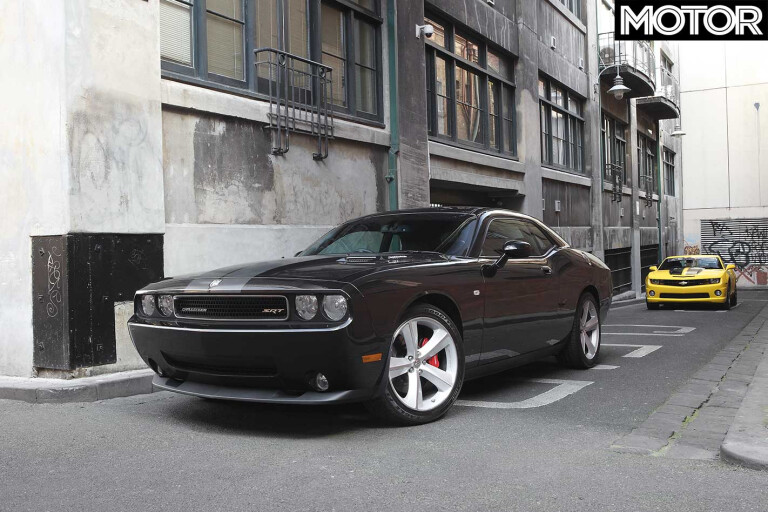
Anyway, here's the first caveat: unless you've outgrown picking your nose at the lights and truly like being looked at, don't buy either of these cars. A lap around the block in any city will have footpath dwellers rubber-necking like they've just seen the Second Coming.
Blokes on construction sites stopped scratching their bums to come over for a gander and shout a few questions through the window, and even little girly uni students (who almost certainly had no idea what they were looking at) were ripping out the phone-camera and snapping off a few frames.
And should you happen across a bunch of first-year apprentices (of any trade at all, it doesn't matter), prepare to be boarded.
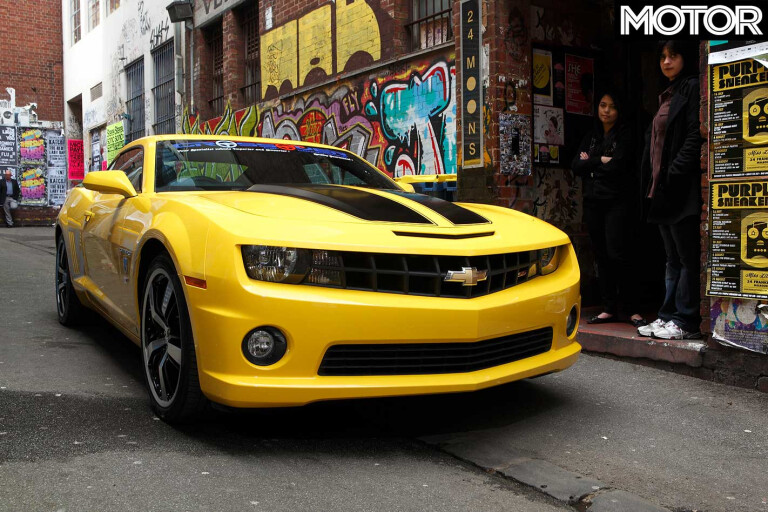
Of course, having everybody looking at you is a rather good thing in the Chev. And that's because, frankly, you're going to have trouble seeing them. The rising waistline and reduced glasshouse means the rear three-quarter view is pitiful. You can sort of forgive this stuff in a door-wedge Lamborghini, but in a car that is otherwise car-shaped, it just seems careless.
Now, I also happen to know that all modern cars are bigger than they've ever been. A generic mid-sized hatchback has the same wheelbase as the first Range Rover, a Golf has more interior space than an EH Holden, and an Evo X weighs almost exactly the same as an XY GT HO. But I'm not sure that simply transferring the rationale of the supersize-me generation to a vehicle concept necessarily fits with the lexicon of retro.
Let's say you took Uma Thurman and made her 30 percent bigger in every direction. Technically - and proportionally - she'd still be beautiful because she still looked like Uma Thurman; just like the 2010 Camaro still looks like a 1967-68 Camaro.
Except Umastein is now seven foot tall and weighs 110kg. And suddenly, I don't want to hold her hand any more (mainly because she now has paws like a shaved Grizzly).
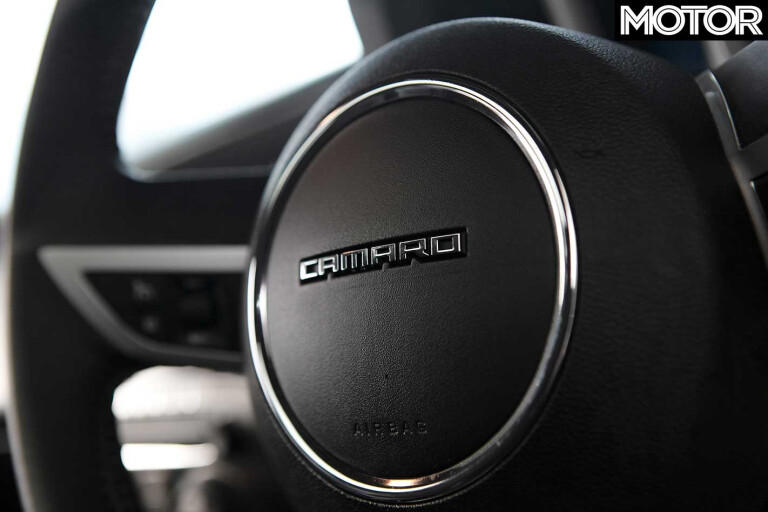
See what I'm getting at? The Camaro is just too big a thing to be considered unequivocally sexy. Whereas Chevrolet's original Camaro was certainly an aggressive looking unit, it was also – for want of a better description – elegant. And the new car just plain isn't.
For blokes like me who remember the old stuff and reckon that even painting a '60s car in modern two-pack is a no-no (it fattens the panel edges and loses that fleshly-ironed look), it doesn't compute.
There's also the slightly cartoon-ish look of the Camaro. If you commissioned a Japanese Manga artist to draw you a Camaro, I'm tipping it'd wind up looking a lot like this yellow gadget.
The Challenger pulls off the retro theme a bit better (if you ask me, anyway). And that's at least partly because it still looks like a Challenger from most angles. Viewed side on, the Camaro could be anything. But from the same angle, the Challenger is identifiably if not entirely Mopar thanks to a design loyal to the Coke-bottle hip, and way the C-pillar angles down towards that hip.
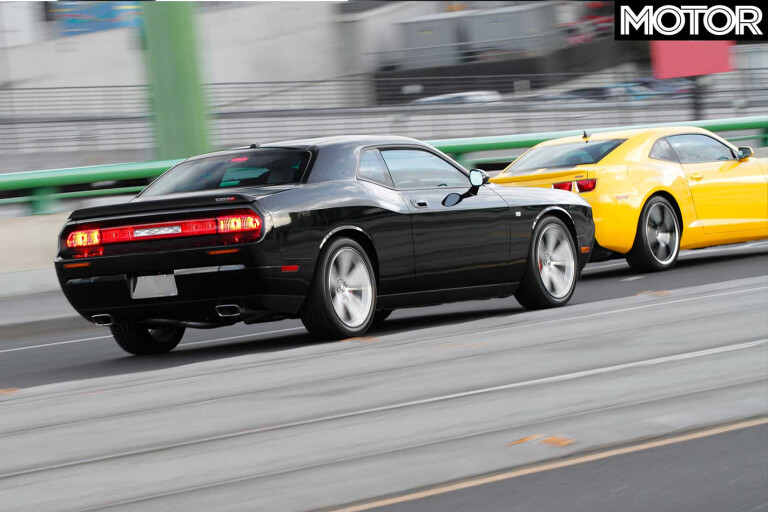
The detail stuff on the Dodge is much cleverer, too. The wide strip of red lights that fill in the space between the bootlid spoiler and the rear apron is sexy beyond words.
But even more hornorific is the view from head-on. Dead set, you see that face loom up in your mirrors and your instant response is to get the hell out of its way before something bad happens to your family. Which is, after all, precisely what every muscle car ever made has wanted you to think.
The dark paint job probably helps, and it'd be interesting to see the Chevy in black next to it. But as it stands, the Challenger looks tough, and the Camaro doesn't. The only real Dodge dodginess is the el-fake-o carbonfibre patch on the bonnet and fuel flap, which looks the business until you touch its plastic horribleness. And recoil in horror, muttering "Damn Americanos".
Inside, things haven't turned out a whole lot better.

The entire layout of the Camaro is based on how a bunch of Gen X/Y designers interpreted the original Camaro's set-up. So, you get the distinctive hooded dials up high and the cluster of trapezoid-shaped gauges stuck way down low in the centre console, as well as great swathes of shiny plastic across each door that I certainly don't remember from the original. Well, not in the same, deliberate context.
Meanwhile, the newer stuff like the digital readout for the climate and stereo stuff is – again, in typical US fashion – cheesy and cheap (although the controls themselves are pretty intuitive), and the actual numbers and needles on the main dials are less legible than they ought to be. Who'd think you'd need to read 'em?
And that's before we even get to the bit about just how the North Americans can do the reverse Tardis thing so effectively, creating a huge car with a cramped interior. Headroom with the optional sunroof is a real premium, and a seating position that suits all shapes and sizes seems a bit elusive, too. Odd, when considering the size and girth of the average Yankee citizen.

Get low enough in the chair to see under the header rail and you've suddenly got no view of the readout for the gear indicator and odometer. And the heavily styled steering wheel forces your hands into a ten-to-two position when most folks prefer a less taxing quarter-to-three situation. Then again, your average US Camaro jockey is likely to have one hand doing the gutter grip while the other's somewhere in Sharonda's lap…
Meanwhile, there's no dead pedal (the original left-hook footrest remains in the passenger's footwell as a conversation piece), and the paddle-shifters only work with the tranny shoved into Sport, rather than function when the thing's in Drive as well.
The Dodge feels more logical to sit in and to use, but while it lacks the dud elements of the Camaro's presentation, it also lacks any real sparkle of its own. Some obvious penny-pinching allowed Dodge to fit a tiller lifted straight from the Chrysler 300C, and the Challenger also gets that car's foot-operated park-brake, which is about as unsexy as you can possibly get in a car that's all about sex and glamour.

When it comes to the actual drive, it's obvious that there's plenty of VE Commodore under those bright yellow Camaro haunches. The engine sounds and feels utterly familiar, and only the clunkiness of the tranny when coming out of Park is grating.
That said, for all the extra hype of the Yank, the local hero VE is actually a better drive with what seems like better chosen (and matched) spring and damper rates, and more feel through the helm.
The Chevy has lost some of that rear-end squat that allows the Commodore to hook up so well even out of slow corners, although it's never what you'd call clumsy. But neither is it ever truly sporty to drive. Oh sure, it gets pretty lively, but a taut, precise chassis it is not.
And neither is the Dodge. Based as it is on 300C underpinnings, it really does feel like a two-door pimp-mobile. This is fine really, because like the Chevy, the Challenger isn’t about Nurburgring lap times, it’s more about showing later generations what they missed.
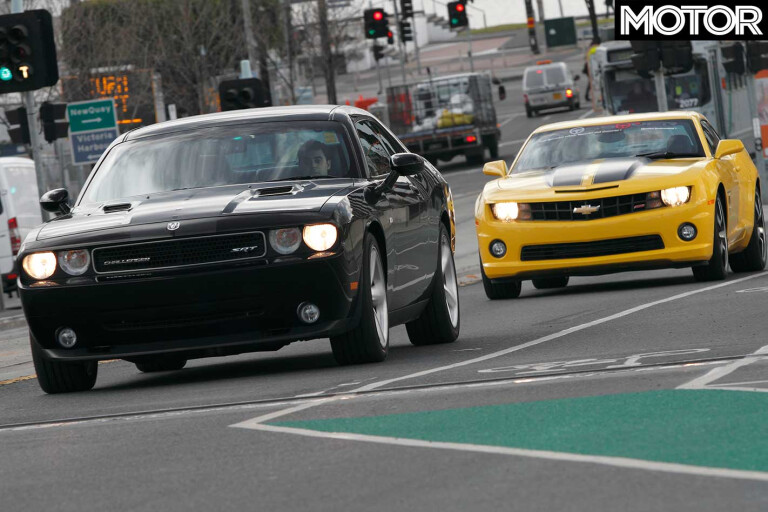
If we're splitting hairs, the Dodge feels a fraction better damped over lumps, but gives a bit away to the Camaro in terms of steering feel and accuracy. The Chev feels a fraction more sprightly in getting away from rest, and the Dodge has a much softer torque converter than the loose, nasty monster fitted to the 300C SRT8.
But the real clincher for us is the exhaust soundtrack spat out by either one of these cubic-inch monsters.
The Chev sounds okay in that weird-firing-order LS kind of way, but it's no match for the bass warble that the Dodge conjures up when you stand firmly on its giblets. In other circumstances, the relative quality of noise mightn't matter, but when you're talking retro muscle cars it is – let's face it – more or less everything.
Who said baby-boomers were shallow?
Fast Facts
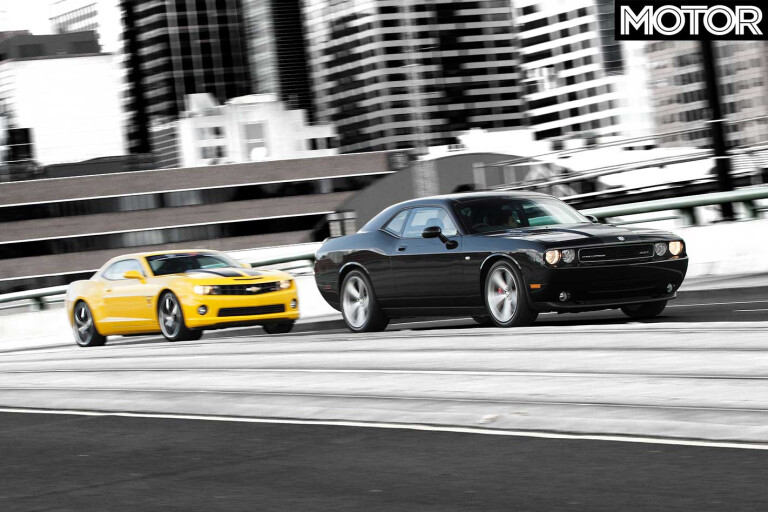
| Chevrolet Camaro | Dodge Challenger | |
| Body | 2-door, 5-seat coupe | |
| Drive | rear-wheel | |
| Engine | 6162cc 90-degree V8, OHC, 16v | 6059cc 90-degree V8, OHC, 16v |
| Bore x Stroke | 103.25 x 92.0mm | 103.0 x 90.9mm |
| Compression | 10.7:1 | 10.3:1 |
| Power | 318kW @ 5900rpm | 317kW @ 6200rpm |
| Torque | 569Nm @ 4600rpm | 569Nm @ 4800rpm |
| Power/Weight | 181kW/tonne | 172kW/tonne |
| Transmission | 6-speed manual | 5-speed manual |
| Weight (dry) | 1755kg | 1874kg |
| Suspension (f) | struts, A-arms, anti-roll bar | struts, A-arms, coil-springs, anti-roll bar |
| Suspension (r) | multi-links, coil-springs, anti-roll bar | |
| L/W/h | 4836/1918/1376mm | 5022/1923/1466mm |
| Wheelbase | 2852mm | 2946mm |
| Tracks | 1618/1618mm (f/r) | 1600/1603mm (f/r) |
| Brakes (f) | 355mm ventilated discs, four-piston calipers | 360mm ventilated discs, four-piston calipers |
| Brakes (r) | 365mm ventilated discs, four-piston calipers | 350mm ventilated discs, four-piston calipers |
| Wheels | 20 x 8.0-inch (f), 20 x 9.0-inch (r) | 20 x 9.0-inch (f/r) |
| Tyre Sizes | Pirelli P Zero; 245/45 ZR20 100Y (f), 275/40 ZR20 103Y (r) | Goodyear Eagle F1 Supercar; 255/45R20 99Y (f); 255/45R20 101Y (r) |
| Price | $148,000 | $135,000 |
| Pros | Stonking grunt with throaty vocals, guaranteed gawking | Muscle soundtrack matches looks, pulls off retro image |
| Cons | Cornering no match for HSVs, poor driving position, plastics | Penny-pinching interior, softer than 300C SRT8 |
| Rating | 3 out of 5 stars | 3.5 out of 5 stars |

COMMENTS